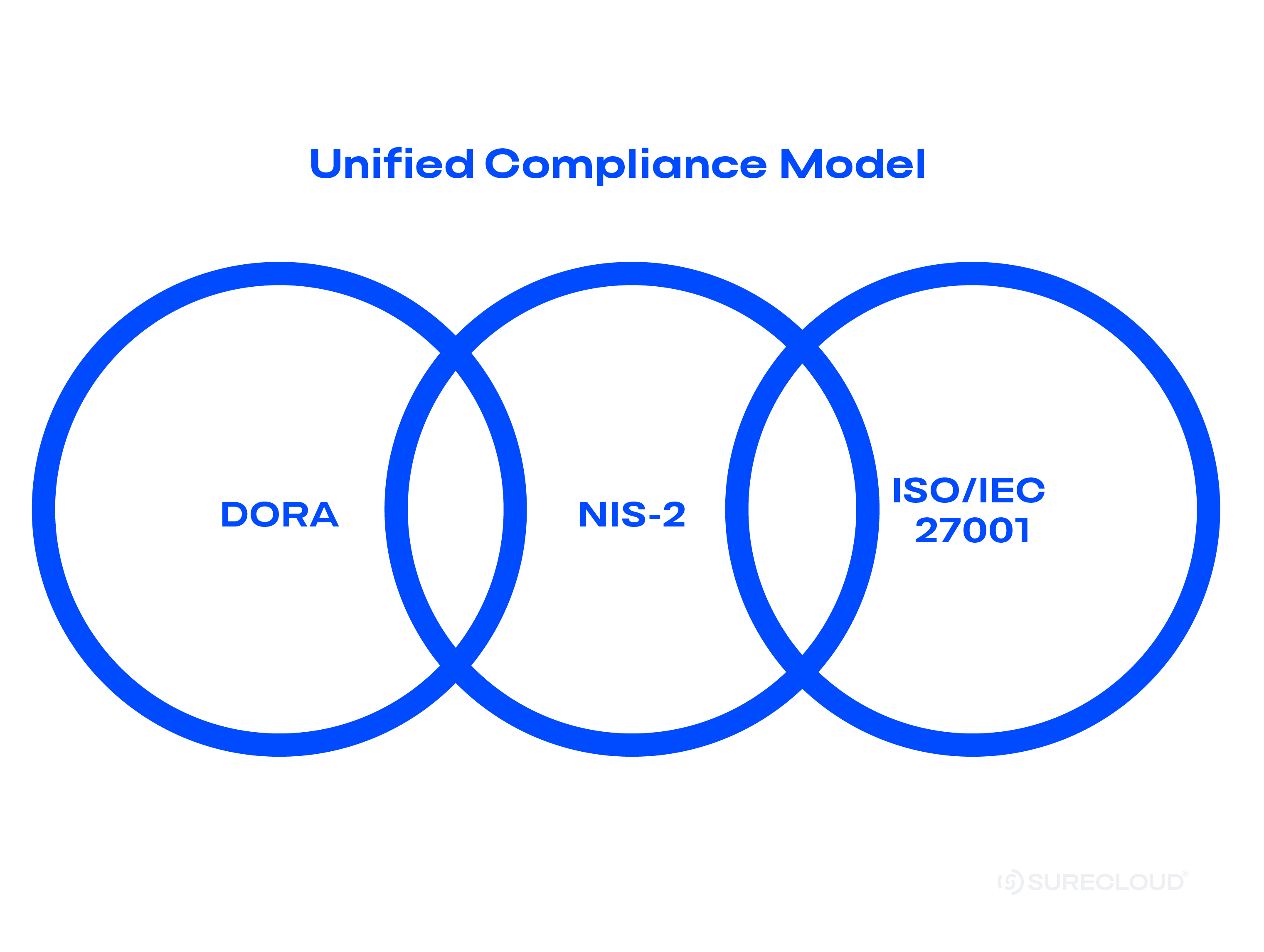
- Third-Party Risk Management
- 25th Nov 2025
- 1 min read
The Invisible Risk Vector: Why Third-Party Risk Can No Longer Be the Poor Relation

- Written by
In Short..
TLDR: 4 Key Takeaways for Third-Party Risk in 2026
-
Third-party risk becomes a front-line resilience issue in 2026, as cloud concentration, SaaS dependency, and identity-chain sprawl mean upstream incidents now land directly in your operations—often within minutes.
-
Supply-chain disruption is now mainstream, highlighted by late-2025 outages across AWS and Cloudflare that showed how single-provider faults can cascade across sectors, apps, and critical services without any attack involved.
-
Traditional internal–external risk thinking is obsolete, because most operational exposure now lives outside your perimeter: platforms, APIs, identity providers, AI model supply chains, and subprocessors that change faster than annual reviews can track.
-
Effective TPRM in 2026 requires readiness over control, combining simple tiering, live signals, human-in-the-loop approvals, and tested recovery patterns to turn vendor exposure into operational resilience.
A well-structured third-party risk programme gives organisations the confidence to operate through their partners, platforms, and suppliers without accepting unnecessary exposure. As digital supply chains deepen and regulatory expectations rise, proactive oversight is no longer optional. With clear governance, continuous signals, and proven recovery playbooks, organisations can anticipate issues, respond faster, and build long-term resilience across their entire third-party ecosystem.
The Year Supply Chain Risk Went Mainstream
A week in late 2025 made the risk obvious. One large platform issue spread across banks, schools, and everyday apps. On October 20, 2025, a regional AWS US-EAST-1 incident disrupted DNS resolution for certain DynamoDB endpoints and rippled across dependent services within hours; proof that upstream disruptions now land directly in your operations. (Independent analysis: ThousandEyes.)
A few weeks later, a Cloudflare configuration error triggered a global outage that returned 5xx errors and blocked logins across many customer sites for several hours, reinforcing how much day-to-day web access now concentrates on a small number of edge and security providers.
If your critical services depend on a handful of hyperscale providers, the question is no longer if they will have another major incident, but when—and how ready you are when it happens.
Premise: 2026 will test every organization’s resilience, not just from within, but through the partners, platforms, and suppliers they rely on.
By “third-party risk,” we mean the business, security, and compliance exposure created by vendors and their subprocessors. They handle your data, identity, APIs, and uptime. Their changes can affect your service in minutes.
What this article delivers: a practical way to raise third-party risk management from a checkbox to a driver of resilience—simple tiers, live signals, human-in-the-loop decisions, and clear proof. If third-party risk in 2026 is on your board agenda, this guide shows what to do first and how to show results.
The Expanding Third-Party Threat Landscape (2026 Outlook)
In 2025 the blast radius widened. Cloud concentration and SaaS consolidation meant a single upstream issue could spread across sectors. AI model supply chains and shared identity providers added more links in the chain. The result: higher third-party cyber risk that sits outside your old perimeter view. The UK NCSC’s Annual Review (2025) and ENISA’s report on supply-chain attacks underscore why supply-chain interdependencies are a structural risk that reduces resilience. (NCSC Annual Review 2025; ENISA Threat Landscape for Supply Chain Attacks.)
Treat this as your wake-up call. Plan for digital supply chain security and build supply chain resilience in 2026 with recovery patterns across critical services.
Examples you should plan for in 2026
- Cascading cloud failures (DNS or edge delivery faults) that hit several vendors at once.
- Supply-chain breaches that expose either supplier or customer-held data.
- Supply-chain pivot attacks where a lower-security third party is compromised and used to reach your environment via trusted credentials or targeted spear-phishing.
- Hybrid cyber-physical or OT events (for example, freight hijacks via compromised broker accounts).
- Model supply-chain issues: poor training-data lineage or tampered model updates.
- Identity-chain abuse: support-portal access, OAuth scope creep, or mis-set single sign-on (SSO).
Authority outlooks to track
Independent 2025/2026 outlooks from Gartner (top security trends shaped by GenAI, decentralization, and supply-chain interdependencies) and IBM’s 2025 Cost of a Data Breach findings (as summarized by Bluefin) highlight governance, supply chain and exposure themes and the need for continuous oversight. (Gartner 2025 trends press release; IBM 2025 report summary via Bluefin)
Why Internal vs External Risk Thinking Is Obsolete
The “internal vs external” split is obsolete. Most of your operational risk now lives outside your walls: cloud platforms, SaaS, managed service providers, APIs, model providers, and subprocessors. When they change something, you feel it fast. Both the UK NCSC and ENISA highlight third-party and supply-chain factors as material contributors to organizational risk profiles. (NCSC 2025; ENISA supply-chain study.)
Industry analyses repeatedly show that a large proportion of incidents involve a third-party element. Treat that as the rule, not the exception. But that doesn’t mean you can neglect internal risk. Mature organizations prioritise both and link their context: they look at how supplier weaknesses and internal gaps can combine into a single incident. A supplier might have weak access controls and be compromised; attackers then use that foothold and trusted channels to phish your employees or abuse integration credentials. If you’ve understood the third-party risk in advance and connected it to your own weaknesses, the chain from “their incident” to “your outage” becomes something you can plan for.
A relatable scenario (SME edition)
An SME uses external services for payroll, CRM, email, and identity. A routine cloud update breaks sign-in in the region that hosts its identity provider (IdP). SSO fails. OAuth tokens cannot refresh. Webhooks queue up. The SME’s own controls are fine, yet staff access, billing, and support stall for hours. Your resilience depends on a supplier’s change control, logs, and recovery.

Lessons from the Last 18 Months: Case Studies That Redefined Trust
CrowdStrike update outage — widespread disruption without a breach
On July 19, 2024, a faulty content update to CrowdStrike’s Falcon sensor for Windows triggered mass BSOD/recovery loops, disrupting airlines, banks, and public services globally; Microsoft estimated about 8.5 million affected Windows devices. (Microsoft blog.)
Lesson: a single upstream change can stop many sectors at once. Plan for graceful degradation and fast rollback.
AWS regional disruption — dependency cascades in hours
On October 20, 2025, AWS experienced a significant incident in US-EAST-1 involving DNS resolution for DynamoDB endpoints; independent analysis tracked the ripple across popular apps and collaboration platforms. (ThousandEyes analysis.)
Lesson: Design for recovery, clear comms, and a fast rollback path. Where possible diversify critical providers.
Cloudflare outage — edge concentration without an attack
On November 18, 2025, a Cloudflare outage triggered widespread HTTP 5xx errors and login failures when a Bot Management configuration file exposed a latent bug in core traffic-handling software. Major sites, apps, and APIs became slow or unreachable for hours, despite no underlying attack or compromise. (Cloudflare incident report)
Lesson: Treat edge and security providers as Tier 1 dependencies. Plan for CDN/WAF and access-gateway outages with bypass patterns, clear fallbacks, and tested comms—not just for core cloud regions.
MOVEit breach — long-tail data exposure
The MOVEit Transfer zero-day CVE-2023-34362 enabled large-scale data theft; disclosures and notifications continued into 2024–25 across thousands of organizations. (NVD CVE entry.)
Lesson: keep a live record of who holds what, where it lives, and for how long.
Capita & Okta incidents — the compounding cost of third-party risk
Capita’s 2023 breach drew a £14m penalty in 2025 and impacted over 6 million people, illustrating multi-year fallout; Okta’s 2023 support system incident required progressive updates as scope and recommended actions clarified. (ICO on Capita; Okta advisory.)
Lesson: dependencies compound impact and extend timelines; map them and plan for long-tail remediation.
What to change on Monday
- Keep a live map of critical partners and dependencies, including fourth parties.
- Schedule table-tops around third-party disruption and regional outages
- Document substitutes for Tier 1 services
- Turn on vendor status, identity, and subprocessor change alerts.
- Route alerts to named owners with clear SLAs and record the outcome.
A Framework for Third-Party Risk in 2026
Here is a five-step path you can set up fast and improve over time. It aligns with ISO/IEC 27036 (supplier relationships), NIST SP 800-161 (cyber supply-chain risk) and, if you are in scope, DORA (EU) for ICT third-party risk.
Step 1 — Identify and map suppliers
- Do now: Make a live list of vendors and subprocessors. Note the service they support, data types, integrations, hosting regions, and any fourth parties.
- Outputs: A simple dependency map per critical service with a named owner.
- Evidence: Inventory export; short data-flow notes; a diagram if it helps.
Step 2 — Assess exposure and tier vendors
- Do now: Use Impact × Likelihood x Recoverability to assign Tier 1–4. Record key risk factors: data sensitivity, privileged access, integration criticality, and any concentration on one provider.
- Outputs: Tier, minimum controls, monitoring cadence, and exit posture per vendor.
- Evidence: Short tiering rationale linked to your control catalog.
Step 3 — Set risk appetite and decision gates
- Do now: For each tier, define what needs human-in-the-loop (HITL) approval. Examples: new data category, region move, OAuth scope change, retention or encryption change.
- Outputs: Appetite statement per tier; an approval matrix; clear SLAs.
- Evidence: Policy snippet plus a one-page decision-gate table.
Step 4 — Monitor continuously
- Do now: Turn on vendor status updates, identity/MFA alerts, and OAuth scope changes. Add subprocessor notices, attestation renewals, and logs/metrics (telemetry) changes. Route each signal to a named owner with an SLA. Record the outcome in a change log.
- Outputs: A short signal catalog and a quarterly assurance pack for Tier 1–2.
- Evidence: Signal history with reviewer notes.
Step 5 — Build shared playbooks
- Do now: Run table-tops for (a) upstream auth failure, (b) region outage, (c) processor breach with the notification clock running. Keep break-glass steps: revoke, roll back, switch route, send comms, export and restore (portability).
- Outputs: Playbooks with roles and timings; a tested export/restore for Tier 1; a named substitute where possible.
- Evidence: Drill notes with actions and owners.
How to Align Risk Appetite with Business Reality
Risk appetite must fit the service, the damage a failure would cause, and how fast you can switch. Avoid “one size fits all.” Use the tiering model to link policy to real choices.
Use the Vendor Tiering Matrix 2026 (Impact × Recoverability)
- Impact: What fails if the vendor stops—revenue, regulated services, safety, or customer trust.
- Likelihood: Probability of a risk actually being exploited, potential of an incident or a breach
- Recoverability: Can you switch or restore inside your recovery time objective (RTO)? Have you tested export and setup?
Set simple thresholds that trigger action
- Examples: new data category; production access scope change; hosting region/jurisdiction change; encryption/retention change; new subprocessor for regulated data.
- Decision model:
- Tier 1: reviewer approval in 4 business hours; roll back if unsure.
- Tier 2: approval in 1 business day; allow compensating controls if risk is within appetite.
- Tier 3–4: log and proceed unless impact crosses the threshold; review in weekly triage.
Scenario planning — three quick drills
If a Tier 1 provider is offline for 48 hours:
- Low appetite: multi-region or multi-provider; failover < 2 hours; quarterly export/restore drills; pre-approved comms.
- Moderate: accept up to 8 hours with workarounds; monthly token/secret drills; substitute named but not hot-standby.
- High: tolerate 24–48 hours with clear comms; focus on fast recovery when service returns.
If a Tier 2 vendor adds a new subprocessor in a new jurisdiction:
- Low appetite: pause processing until DPIA and update are done; reviewer approval in 1 business day; contract addendum if needed.
- Moderate: allow with restricted data and extra logging; review in 5 business days.
- High: log and proceed; schedule a post-change check; verify deletion/exit path.
If a production integration asks for OAuth scope elevation:
- Low appetite: deny; redesign for least privilege; rotate secrets; test rollback.
- Moderate: allow temporary elevation with expiry, alerts, and data-owner + security approval inside 24 hours.
- High: approve with a clear reason; add targeted alerts; re-certify access monthly.
From Controls to Readiness
You cannot control external events. You can control how ready you are. The goal for 2026 is simple: turn vendor exposure into operational resilience. Assume something will fail upstream. Limit the blast radius. Recover fast. Keep proof of each decision.
How third-party risk feeds resilience
- Continuity planning: map critical dependencies. Set RTO/RPO per service. Test export and restore (portability) for Tier 1.
- Redundancy by design: use multi-region or multi-provider patterns where it pays off. Name substitutes and switching steps.
- Decision speed: route material vendor changes to named owners. Add a reviewer gate with clear SLAs. Log the outcome.
- Learning loops: run table-top tests for auth failure, region outage, and processor breach. Address the gaps identified and retest.
Continuous Assurance: The Future of Vendor Oversight
Annual supplier reviews cannot keep up with live integrations. Continuous assurance uses automation plus human-in-the-loop decisions. You spot change early. You act on it. You show proof. This shifts oversight from static governance to real-time exposure management. Gartner’s 2025 trends reinforce the role of AI and supply-chain interdependencies in moving governance toward more dynamic, resilience-focused controls. (Gartner 2025 trends.)
What leading teams do now
- Live signals: as listed in Step 4 (status, identity/MFA, OAuth scope, subprocessor, attestations).
- Risk scoring with guardrails: simple scoring to rank work. Inputs are clear. Reviewers can override. Every step is traceable.
- Workflow automation: rules route signals to owners and reviewers with SLAs and escalations.
- Assurance packs: quarterly packs for top-tier vendors with changes, incidents, tests, and attestations.
- GRC resilience metrics: MTTD-V, time-to-decision, % Tier 1–2 with live signals, last export-test date.
These metrics roll up into a one-page board update tracked each quarter.
Where SureCloud fits (capabilities)
- Dynamic dashboards: one place to see vendors, dependencies, and fourth parties. Role-based views for owners, risk, and legal.
- Risk scoring & prioritization: configurable factors (data sensitivity, privileged access, integration criticality, concentration). Full trace. Reviewer override.
- Workflow automation: pull in signals, route to owners/reviewers, record HITL approvals, and keep a change log. Export assurance packs for Tier 1–2.
The 2×2 model also clarifies vendor cyber risk by matching business impact with how quickly you can switch or recover.
Getting started? See Foundations: GRC for Growing Teams.
Closing Thoughts: Turning Risk into Resilience in 2026
Stop trying to control the ecosystem; control readiness. The path is clear: see what matters (awareness), focus where it counts (prioritization), and be ready to act (preparation). Treat tiering, live signals, HITL approvals, and tested export/restore as normal run-time work, not annual projects. Reframed this way, third-party risk becomes strategic enablement for growth and trust.
Five actions for third-party resilience in 2026 (checklist)
- Tier now: apply Impact × Recoverability to your top vendors; assign Tier 1–4.
- Turn on signals: status, identity/MFA, OAuth scope, subprocessor, and attestation updates routed to owners with SLAs.
- Add reviewer gates: HITL approvals for status-changing events; log decisions in a change register.
- Contract for visibility and exit: telemetry access, breach SLAs, subprocessor notice, and export/restore terms.
- Drill portability: run two table-tops this quarter (auth failure; region outage) and address the gaps identified.
.png?width=911&height=530&name=Rectangle%2044%20(1).png)
Are you confident you would spot a critical vendor change before it impacted your business?
FAQ’s
What is third-party cyber risk in 2026?
It’s the security, compliance, and operational risk created by external providers - cloud, SaaS, MSPs, data processors, and their subprocessors—whose identity paths, APIs, and changes can affect your services in minutes.
What major third-party incidents shaped 2025?
Large cloud and platform outages, plus long-tail supply-chain breaches. They showed how concentration and weak support paths can disrupt many sectors at once, even without a direct attack on your systems (for example, CrowdStrike 2024 content-update fault; AWS US-EAST-1 regional disruption Oct 2025; Cloudflare global outage Nov 2025; MOVEit long-tail disclosures into 2024–25). (Microsoft on CrowdStrike; Cloudflare incident report, ThousandEyes on AWS Oct 2025; NVD on MOVEit CVE.)
What are the best frameworks for managing third-party risk?
Align evidence to ISO/IEC 27036 (supplier relationships) and NIST SP 800-161 (cyber supply-chain risk). If you are in scope, meet DORA (EU) obligations for ICT third-party risk. Use them as structure; keep operations simple and continuous.
How can businesses prepare for vendor disruption in 2026?
Use the 2×2 tiering model above; turn on continuous signals (status, identity/MFA, OAuth scope, subprocessor, attestations); require HITL approvals for status-changing events; and drill export/restore and comms for Tier 1 each quarter.
How can AI help monitor supplier cyber risk?
AI can score and rank signals, spot patterns, and suggest next steps. Keep guardrails: clear inputs, explainable scores, reviewer override, and full trace of each decision. Gartner’s 2025 trends reinforce the shift toward resilience and governance in AI-enabled controls. (Gartner 2025 trends.)
How does third-party risk connect to business resilience?
Your resilience depends on vendors as much as on your own controls. By tiering, monitoring, deciding fast, and keeping proof, you absorb impact faster, keep critical services running, and build trust with customers and regulators, forming a lean cyber resilience strategy for your vendor ecosystem.
“In SureCloud, we’re delighted to have a partner that shares in our values and vision.”
Read more on how Mollie achieved a data-driven approach to risk and compliance with SureCloud.
“In SureCloud, we’re delighted to have a partner that shares in our values and vision.”
Read more on how Mollie achieved a data-driven approach to risk and compliance with SureCloud.
“In SureCloud, we’re delighted to have a partner that shares in our values and vision.”
Read more on how Mollie achieved a data-driven approach to risk and compliance with SureCloud.

Reviews
Read Our G2 Reviews
4.5 out of 5
"Excellent GRC tooling and professional service"
The functionality within the platform is almost limitless. SureCloud support & project team are very professional and provide great...
Posted on
G2 - SureCloud
5 out of 5
"Great customer support"
The SureCloud team can't do enough to ensure that the software meets our organisation's requirements.
Posted on
G2 - SureCloud
4.5 out of 5
"Solid core product with friendly support team"
We use SureCloud for Risk Management and Control Compliance. The core product is strong, especially in validating data as it is...
Posted on
G2 - SureCloud
4.5 out of 5
"Excellent support team"
We've been happy with the product and the support and communication has been excellent throughout the migration and onboarding process.
Posted on
G2 - SureCloud

.png)

















